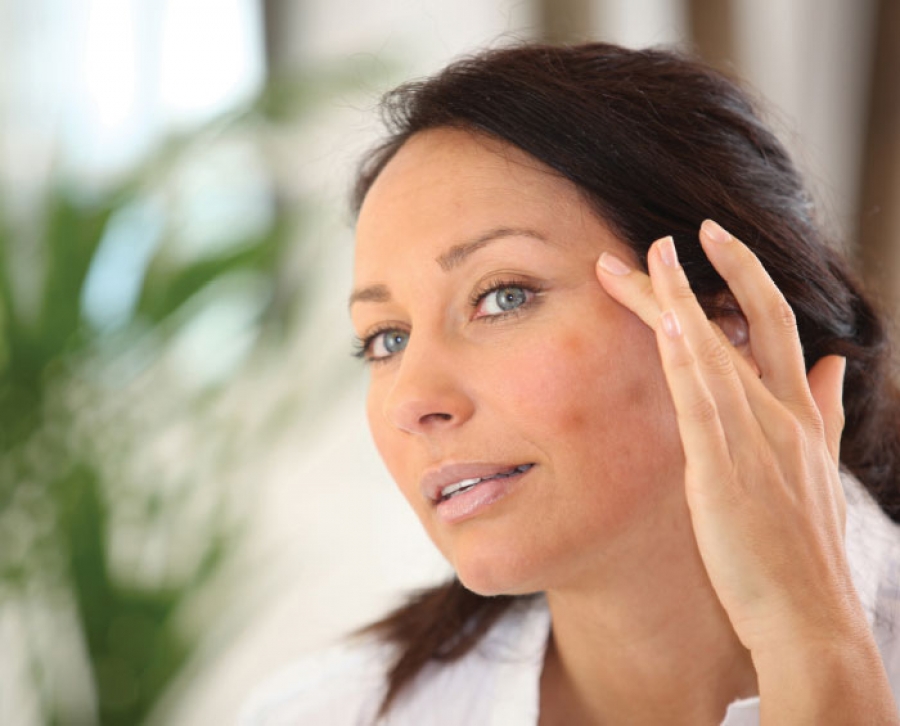Some of these ingredients contribute more to overall lightening, while others are more effective in selectively reducing hyperpigmentation (dark spots/areas arising from various causes). Skin lightening products need to be selected by the end user based upon the desired impact in appearance.
THE ROLE OF MELANIN
Natural skin lightening ingredients seek to inhibit coloration of epidermal skin cells through various means of hindering melanin pigment contribution to those cells. Melanin is the compound responsible for pigmentation in the hair, skin, and eyes. Melanin has two expressions: pheomelanin, which is typically a yellow or orange pigment, and eumelanin, a dark-brown pigment. Melanin production is closely related to genetic and environmental factors, such as ultraviolet exposure, environmental pollution, genetic predisposition, food and medicine intake, hormones, and aging, which are key influencers of melanin production in the skin.
Production of melanin in the skin occurs in specific cells called melanocytes. These cells create the pigment that is then transported to skin cells (keratinocytes) via arm-like structures called dendrites.
One melanocyte typically "donates" pigment to many adjacent keratinocytes via their dendrites.1 The production of eumelanin and pheomelanin in the melanocyte involves a chain of enzymatic and non-enzymatic reactions, with tyrosine playing a key role. This complex chain of interactions to achieve the final forms of melanin provides various opportunities for interruption by an active skin care ingredient that can reduce pigment production and, thus, lighten skin. While inhibiting melanin production in the melanocyte by these special active ingredients, it is very important not to damage the melanocytes and harm their future function. Compounds, like steroids, hydroquinone, and tretinoin, have been shown to create chronic adverse effects on melanocyte function. A number of national health services warn about the use of these ingredients. Less harmful, natural lightening ingredients would be the preferable solution. The ideal skin lightening agent for cosmetic products
is one that inhibits melanogenesis without cytotoxicity.
NATURAL SKIN COLORATION INHIBITORS
There are a number of natural active ingredients available that inhibit melanin pigment from reaching the skin cells. They do so in various ways without creating chronic adverse effects on melanocytes.
Some actives slow down melanocyte activity, whereas others inhibit tyrosinase or reduce the transport of melanin to keratinocytes. Many of these actives have in vitro and in vivo testing verifying their performance. Although this list is not exhaustive, the following are natural actives that are known to lighten skin and/or reduce hyperpigmentation either by scientific studies or specific clinical testing: bellis perennis extract, boerhaavia difusa root, ferula foetida root extract, lemon peel bioferment, licorice root extract, magnesium (or sodium) ascorbyl phosphate, morus nigra leaf extract, palmaria palmata extract, punica granatum extract, rumex occidentalis extract, tetrahydrodiferuloylmethane, uva ursi (bearberry) leaf.
ADDITIONAL HELPERS
Another source of unwanted coloration in the skin, which is not related to melanin, arises from aging skin cells that, over time, accumulate various degraded components that need to be eliminated. This cell "waste" often appears as fine, granular, yellow-brown pigment particles composed of lipid-containing residues of lysosomal digestion.2 This age pigment, which is named lipofuscin, is considered to be one of the aging or wear-and-tear pigments. It usually begins to impact appearance at about age 60 and gives the skin a slightly yellow appearance. One particular ingredient is actually shown to reduce the amount of the age pigment and the coloration appearance. Candida saitoana, CellDetox®, is a patented detoxifying ingredient that in vitro tests show a 35 percent decrease in the accumulation of lipofuscin and an in vivo test subject improvement in complexion radiance and color.
With all actives, skin lightening takes time. The outer layers of the skin with old pigment must turnover and be replaced by new keratin with less pigment. In youth, this process takes about four weeks; as people age, the process can take twice as long. One can accelerate the lightening process with natural exfoliation – mechanical and chemical. This action will accelerate turnover and allow the cells with the lighter pigmentation to begin appearing at the surface layers. A good lightening product will include natural exfoliants as part of the ingredient complex.
References
1 Alberts, B., Johnson, A., Lewis, J., Raff, M., Roberts, K., & Walter, P. (2002). Molecular biology of the cell. New York: Garland Science. pp. 1022
2 Katz, M.L. and Robison Jr., W.G. (2002). "What is lipofuscin? Defining characteristics and differentiation from other autofluorescent lysosomal storage bodies." Archives of Gerontology & Geriatrics,34(3), 169-84.
Lee, S.H., Choi, S.Y., Kim, H., Hwang, J.S., Lee, B.G., Gao, J.J., & Kim, S.Y. (2002, August). "Mulberroside F isolated from the leaves of Morus alba inhibits melanin biosynthesis." Biological and Pharmaceutical Bulletin, 25(8), 1045-8.
